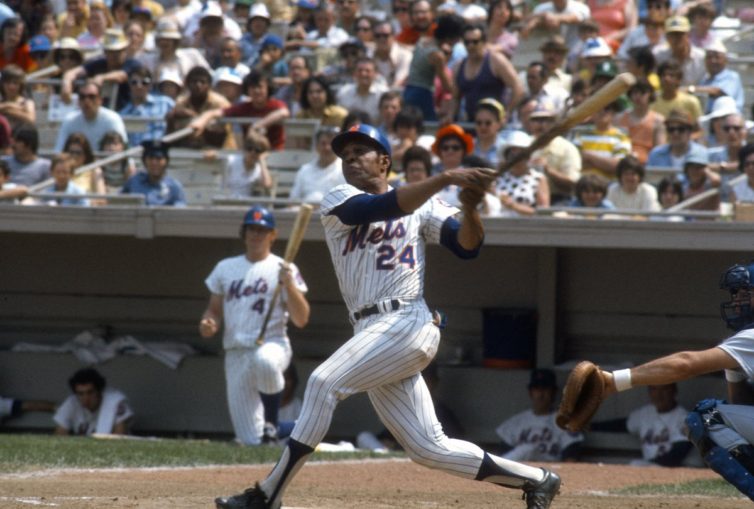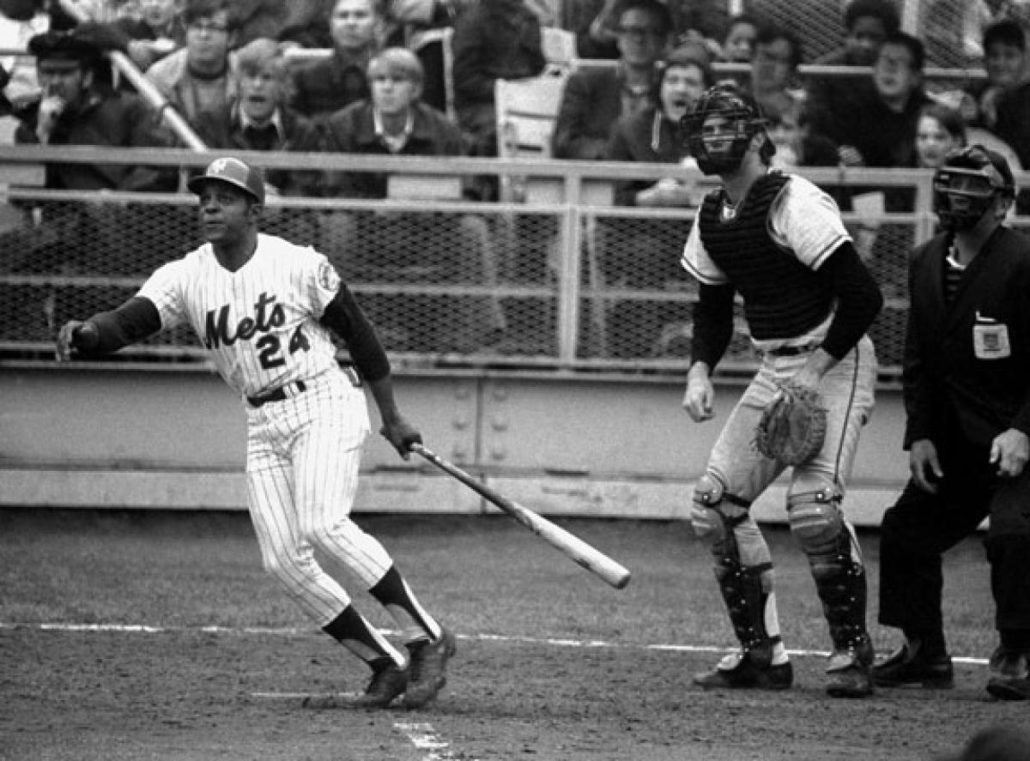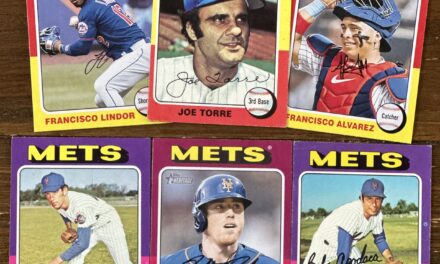
To most Mets fans, October 14, 1973 is best remembered for game two of the World Series against the Oakland A’s, a game the Mets went on to win. But another significant event took place in that game 45 years ago: Willie Mays stroked the final hit of his glorious career.
To many baseball devotees, Mays was the ultimate five-tool player. Perhaps members of the Hall of Fame executive committee said it best when they remarked that “Willie Mays…played with enthusiasm and exuberance while excelling in all phases of the game–hitting for average, fielding, throwing and base running.” Baseball writers of his era once observed, “there are 499 Major League ballplayers. Then there is Willie Mays.”
Mays played for the Giants, both in New York and San Francisco, for 21 years before being traded to the Mets in 1972. The seeds of the trade were planted after the 1957 season when the Giants moved to San Francisco. Mays continued his extraordinary play but the team was losing money. It got to the point where Giant owner, Horace Stoneham, could not guarantee Mays a pension upon his retirement and began looking to possibly trade him.
The Mets, who won a championship in 1969 but had struggled in the years since, were looking for a public relations boost for its fan base. Mets owner Joan Payson had always been a Giants fan and even once owned a minority share of the team. For years, she wanted Mays to finish his career in New York where it started, and attempted several times to make a trade. In her final, successful attempt to land Mays, she guaranteed him a coaching position with the team at $75,000 per year for at least three years after his retirement.
On May 11, 1972, executives from both the Giants and the Mets got together to discuss a possible trade. Since Mays was involved, Commissioner Bowie Kuhn was also present. Before the day was done, the talks had ended and a trade was consummated. Willie Mays was dealt to the Mets for pitcher Charlie Williams and $50,000. Mays said upon the trade, “it’s a wonderful feeling, and I’m very thankful I can come back to New York.”
Mays made his Mets debut on May 14, 1972, ironically against the Giants. In typical Mays fashion, he hit a go-ahead solo home run in the fifth inning off of Don Carrithers to give the Mets the lead they did not relinquish. It was his first hit for his new team. Mays appeared in 69 games in 1972 with 195 at-bats. His slash line was .267/.402/.446.

In 1973, Mays hit his 660th and final home run off the Reds’ Don Gullett. He played in only 65 games for the Mets in ’73 with 209 plate appearances and a .211 BA. He had trouble in the outfield, missing routine fly balls and even falling on occasion. Mays said, “growing old is just a helpless hurt”. The New York press described Mays as a player “stumbling around” the field. He did appear in his 24th and final All-Star game tying him for the most ever with Stan Musial and Hank Aaron. Ted Williams once remarked, “they made the All-Star game for Willie Mays.” The Mets honored Mays on September 25, 1973, with ‘Willie Mays night’, giving him the opportunity to thank New York fans some of whom had followed him for decades.
Mays finished his playing career in the 1973 World Series against the Oakland A’s. It was his fourth appearance in the fall classic. He was 42 years old making him the oldest player to appear in a World Series. He stroked the first hit in game one of the Series in a Met loss. In game two, he got an important single to help the Mets win an extra-inning game to tie the Series at a game apiece. That hit was the last of his career. Mays’ last at-bat came as a pinch hitter in game three where he grounded out. Willie Mays retired as a player at the end of the Series having played about a season and a half with the Mets.
In 1974 and 1975, Mays served as bench coach for the Mets. He was also used as a first-base coach in ’75 when Roy McMillan replaced Yogi Berra as manager. Under skippers Joseph Frazier and Joe Torre, Mays was primarily used as the team’s travel coach. Mays last year in coaching was 1969 after which he retired to his home in California where he is living today.
Willie Mays was voted into the Hall of Fame on January 23, 1979, receiving 94.7% of the vote on the first ballot. Several writers were incredulous at him not being a unanimous selection. His career slash line is a remarkable .302/.384/.557. He was the NL Rookie-of-the-Year in 1951 and twice the NL MVP–in 1954 and 1965. He laced 660 home runs which ranks him fifth all-time and won 12 Gold Glove awards starting in 1957 when the award was first introduced. He even was awarded the Presidential Medal of Freedom in 2015 from President Obama. The Sporting News ranked him second on their “list of the 100 Greatest Baseball Players.” He may have gotten his last hit 45 years ago today, but he has 3,282 others in a truly remarkable career.















